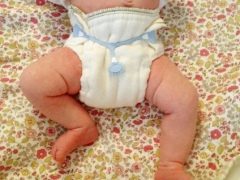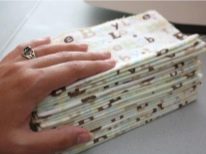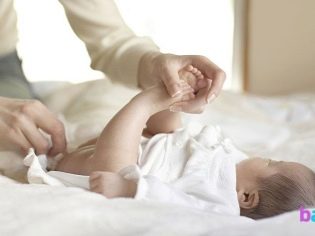How to make gauze diapers for newborns?
The last couple of decades, to Russia, to the great joy of all young mothers, diapers for babies have finally arrived, which have significantly simplified life for both children and their parents: the number of washes has significantly decreased, and the baby’s ass has become dry and clean longer. All is good, if not for one significant but. The cost of such disposable diapers is very high, and not every family can afford the purchase of such products.
Special features
Gauze diapers were made by our grandmothers and even mothers. Many still do not advise young people to get involved in "fashionable things", but to use proven hygiene products that are easy to do with your own hands from cheap, affordable, and most importantly, environmentally friendly materials.
As the name implies, gauze products are made of gauze, but the quality of such a web today leaves much to be desired - in previous years the material was stronger, and the threads, after washing, did not pile up and did not stick together. Finding such gauze these days is not an easy task, so most mothers who are forced to use cloth diapers sew them from any other thin cotton fabric. Many advise the use of old sheets or duvet covers, which from numerous washes have acquired the necessary softness to the touch.
The advantages of gauze diapers are obvious:
- thriftiness - their cost is minimal, the price per square meter of gauze does not exceed 30 rubles, and if you sew them from old clothes, the costs will be completely zero;
- environmental friendliness - gauze is made from natural materials that do not contain harmful and toxic substances;
- hypoallergenic - children are not allergic to cotton materials, so when using it, you can not be afraid of the appearance of allergic reactions in the form of rash or edema;
- gauze is a breathable materialtherefore, the baby doesn’t have a greenhouse effect when worn.
However, not everything is so simple, gauze diapers have some significant drawbacks:
- Unlike reusable analogues produced in the factory with a special filler, gauze products absorb much less water, so they should be changed after each “surprise” - that is, about 20 times a day;
- when they absorb water, they get wet, and if parents don’t have the opportunity to change them right away (for example, during a walk), they get irritated on the skin, and even the baby himself is uncomfortable in a wet environment, so he becomes restless and tearful;
- cloth diapers should be constantly washed, and for newborn babies even to be ironed after each wash;
- fabric products are quite difficult to fasten on the body of the child so that they do not crawl.
It is necessary to change fabric diapers even at night, therefore neither mother nor baby can sleep properly - this is what caused the total rejection of such home-grown means.
Separately, it is necessary to dwell on the existing myths associated with the use of disposable diapers. Adherents of gauze products argue that the store product is dangerous for the reproductive function and the urinary system of the boy, causes curvature of the legs, and also prevents schooling to the pot. All this is not true.
There is no proven link between the reproductive ability of men and diapers that they used in infancy. Spermatozoa begin to be produced in boys only by the age of 7–8 years, so an elevated temperature of the testicles in the pampers can in no way affect sexual function in the future.
The curvature of the legs also cannot be a consequence of wearing a diaper, since the children in them are in a natural position inherent in nature, which causes absolutely no pathologies of growth and development.
As for potty training, supporters of gauze diapers simply do not take into account the fact that the child begins to control the urination and emptying of the intestine only by 1.5 years, and more often psychologists and therapists recommend potting up to 20-24 months.
Thus, it is obvious that the only practical reason to refuse one-time diapers in favor of gauze is only their inflated price.
Taking into account the pros and cons of hygiene products made from gauze or other soft tissue, each family makes its own decision on which diapers to use. Grandmothers cannot be an authority here, because in their times there was simply no alternative to gauze, and they have nothing to compare with.
As a rule, doctors recommend stitching 8-10 pieces and use them several hours a day in combination with purchased waterproof ones.
How to do?
In order to make fabric diapers at home, you need to choose and process their base. It does not matter what kind of fabric you choose for this, as long as it is very soft, breathable and tactilely pleasant.
Gauze or another cloth is cut into several squares, and you do not need to cut out either large or too small, as a rule, you have to bend the gauze in 2-4 layers, so the workpiece is better to be made with sides of at least 80 cm. Basics you decide to stay on the old sheet, the side of the square can be less - 50 cm, because this fabric is denser and it does not need to be folded repeatedly.
Try to calculate in advance the amount of cloth that you need, for this you should start from the daily norms of emptying the bowels and bladder of the child - usually it happens every 1.5 -2 hours, but you should prepare the diapers with a reserve, because if the child freezes or his mother will eat something wrong, and stool and urination can be much more frequent.
Shortly before giving birth, one should practice in the proper folding of diapers - in practice it is not as easy as it may seem at first glance. The most common ways are "Hungarian", "kerchief" and "triangle". Consider the technology of their manufacture step by step.
"Klondike"
The simplest version of the diaper for newborns, if you look at the reviews, is considered to be "kerchief". It is quite simple to make it - for this you should take a piece of fabric and cut rectangles of the same size with a width of 90 cm and a length of 180 cm.
The resulting cut should be spread out on the table and rolled in half, after which once again bend in half, only now diagonally diagonally. Thus, a peculiar scarf is formed. Optionally, you can sew around the edges with a needle and thread or on a typewriter - this is an optional condition, but such treatment will extend the life of the product.
The kerchief is placed on the changing table at an angle down, and the child is placed on it. The lower corner is stretched between the legs of the baby to the navel, and then the body is wrapped in lateral parts so as to grab and fix the corner stretched below. The longer the side edges of the kerchief, the more convenient - in this case it will be possible to tie a small knot, so that homemade diapers do not slip. If this is not possible, then the edges can be simply neatly tucked behind the belt.
With such a kerchief can handle any young mommy, which is far from the skills of sewing and cutting.
"Hungarian" option
The “Hungarian” version is a bit more complicated:
- it is necessary to prepare a square piece of linen with a size of 90x90 or 60x60 (depending on the height and weight of the baby);
- the square is folded twice along, and the resulting rectangle is re-bent double across so that the output is a square;
- One of the corners of the resulting billet should be bent so as to form a kerchief;
- unfinished product must be carefully turned over to the other side - a rectangle will be noticeable, which should be rolled up several times.
The diaper is ready for use - now you need to put it on the baby so that the strip-rectangle passes evenly between the legs, you should grab it with the edge triangles and fix the design.
"Triangle"
In order to make such a diaper for children, you will need a piece of fabric or gauze with a length of 1 meter and a width of 60 cm, in addition, you will need a small ribbon that will be used as strings. The segment must be folded in half until a rectangle of 60x20 cm is formed.
If you have a boy, then when folding the emphasis needs to be made on the upper part of the blank. The resulting diaper should be placed on the table, and the newborn should be placed on top so that the back edge of the gauze extends slightly behind the baby's back. A gauze diaper must be laid between the legs, for this, the rest of the blank is folded again and applied to the child. Then you should take a braid and tie it to the body of the baby.
If the product is used for a girl, the emphasis, on the contrary, is on the lower part of the prepared diaper. To begin with, half of the product is folded twice, and then the baby is laid on it, while the remaining edge of the product is laid between the legs, and then, as in the first case, the fabric is fixed to the body with a ribbon.
It is recommended to process this diaper with an overlock, then it will be easier to replace one product with another.
This method is considered optimal for newborns and for older children: they are comfortable to lie in, comfortable to run and crawl easily.
Yes, and replacing them is not difficult for a young mother.
It should be noted that some parents prefer a more modern version, in which fabric products are presented only by inserts - but for this you will need waterproof panties.
Take square-shaped pieces of gauze and fold them 2-4 times, and fix a piece of cloth in the center, for example, a piece of unnecessary terry towel. Hands or on a sewing machine should stitch the edges and thus get some semblance of a gasket.
She is placed in panties and put it all on the baby. It should be noted that this product will be slightly more reliable than those described above. However, to dry after each wash it will be a little longer than the straightened gauze.
In emergency situations, when there is no gauze or a soft cloth, an ordinary bandage will help save the situation. To do this, take the roll and wind off the tape with a length of at least 3 meters and fold several times.
Given that bandages are usually sold already sterilized, such homemade pampers do not need to be washed and ironed, but you should take into account that you will not be able to use it many times.
How to use?
As already mentioned, gauze products require frequent changes and daily washing - this is what distinguishes them from store-ready counterparts. If an old linen or cotton cloth is chosen as the base, you can set a gentle washing mode on a typewriter or wash it by hand in hot water with a special detergent. But the diapers from gauze require more careful handling. They are washed by hand and rinsed under running water.
Gauze is erased easily, so the procedure does not take much time and effort, and it dries in a matter of hours.
With the passage of time, gauze begins to turn yellow - this does not impair its operational features, however, if desired, the fabric can be bleached, and hydrogen peroxide is used for this purpose.
To this end, the composition is added to hot water and pampers soaked in a simple soap for 2-3 hours are soaked in a solution.
For washing in 5 liters of water will require 2 tbsp. l 3% peroxide solution or 3-4 crushed hydroperit tablets.
Not everyone understands how to use gauze diapers. You need to understand that they should be changed immediately after getting wet or soiled - otherwise diaper rash and severe irritation in the form of rash and redness will inevitably appear on the skin.
Before using, washed diapers should be ironed with a hot iron on both sides - this will destroy all pathogenic bacteria and other pathogenic microorganisms.
For information on how to fold a cloth or gauze diaper, see the following video.







































